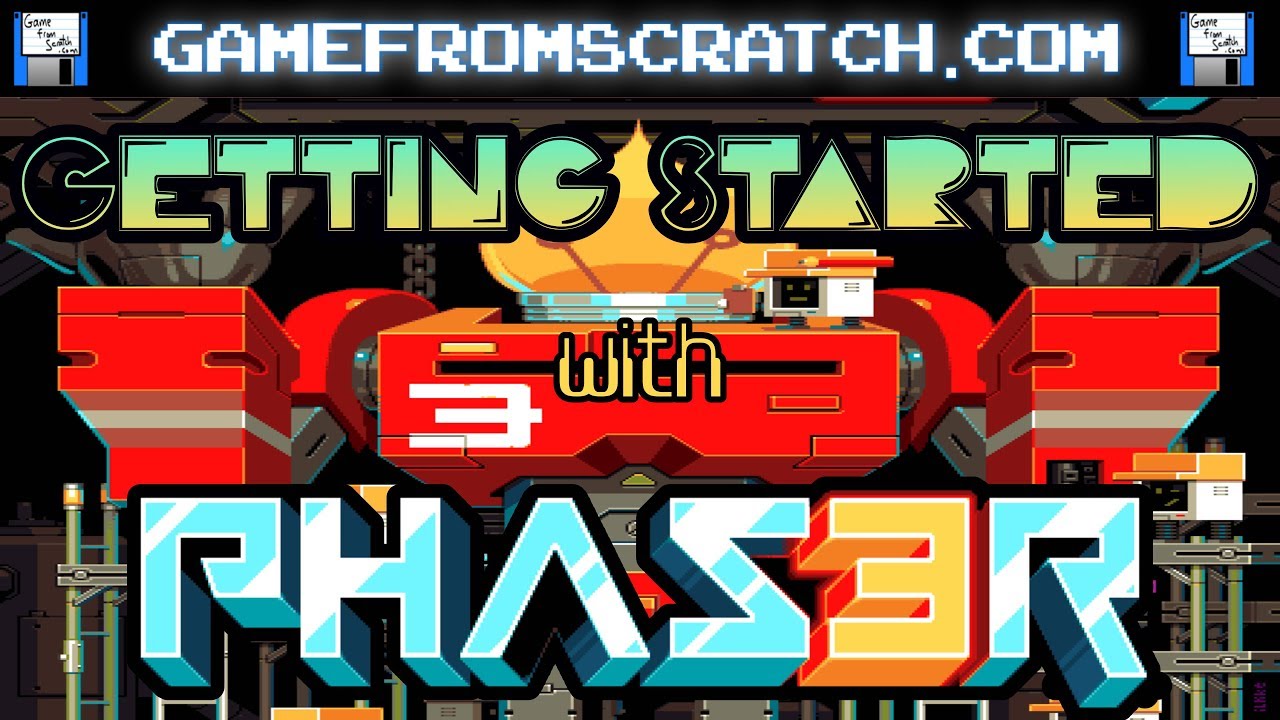Here is a quick intro to Phaser 3:
Here’s some code based on the video, if anyone wants a quicker version:
<!DOCTYPE html>
<html>
<head>
<meta charset="utf-8">
<meta name="viewport" content="width=device-width, initial-scale=1">
<title>Phaser 3 Demo</title>
</head>
<body>
<script src="https://cdnjs.cloudflare.com/ajax/libs/phaser/3.15.1/phaser.min.js"></script>
<script>
class Example1 extends Phaser.Scene {
constructor() {
super({ key: 'Example1' });
}
preload() {
this.load.image('DRAGON', 'assets/dragon.png');
}
create() {
this.image = this.add.image(400, 300, 'DRAGON');
// one way to bind a key
this.input.keyboard.on('keyup_D', () => {
this.image.x += 10;
});
// another way to bind a key (repeats)
this.key_A = this.input.keyboard.addKey(Phaser.Input.Keyboard.KeyCodes.A);
this.input.on('pointerdown', event => {
this.image.x = event.x;
this.image.y = event.y;
});
this.input.keyboard.on('keyup_P', () => {
const physicsImage = this.physics.add.image(this.image.x, this.image.y, 'DRAGON');
physicsImage.setVelocity(Phaser.Math.RND.integerInRange(-100, 100), -300);
});
this.input.keyboard.on('keyup', e => {
if (e.key === '2') {
this.scene.start('Example2');
} else if (e.key === '3') {
this.scene.start('Example3');
}
});
}
update(delta) {
// handle the 'a' keybinding
if (this.key_A.isDown) {
this.image.x -= 3;
}
}
}
class Example2 extends Phaser.Scene {
constructor() {
super({ key: 'Example2' });
}
create() {
this.text = this.add.text(0, 0, 'Welcome to Example2', { font: '40px Impact' });
// this is horrible, but it's just an example
const tween = this.tweens.add({
targets: this.text,
x: 200,
y: 250,
duration: 2000,
ease: 'Elastic',
easeParams: [1.5, 0.5],
delay: 1000,
onComplete: (src, target) => {
target[0].x = 0;
target[0].y = 0;
target[0].setColor('Red');
}
});
this.input.keyboard.on('keyup', e => {
if (e.key === '1') {
this.scene.start('Example1');
}
});
}
}
class Example3 extends Phaser.Scene {
constructor() {
super({ key: 'Example3' });
}
preload() {
this.load.audio('test', ['assets/roar.mp3'])
}
create() {
this.soundFX = this.sound.add('test', { loop: false });
this.soundFX.play();
this.soundFX.rate = 0.55; // slow it down
// loop control
this.input.keyboard.on('keydown_L', () => {
this.soundFX.loop = !this.soundFX.loop;
if (this.soundFX.loop) {
this.soundFX.play();
}
});
// pause control
this.input.keyboard.on('keydown_P', () => {
if (this.soundFX.isPlaying) {
this.soundFX.pause();
} else {
this.soundFX.resume();
}
});
}
}
const config = {
type: Phaser.AUTH,
width: 800,
height: 600,
physics: {
default: 'arcade',
arcade: {
gravity: { y: 200 }
}
},
scene: [Example1, Example2, Example3]
};
const game = new Phaser.Game(config);
</script>
</body>
</html>
The files below go in an assets directory next to the index.html file.
The dragon image:
I used this sound file for the dragon:
I made this sound with some recordings of me (basically being a dork) coughing, growling, snorting, blowing into the microphone and more.
It would be a great sound for a game or animation or movie, whatever you want.
It would be great if you credit...

